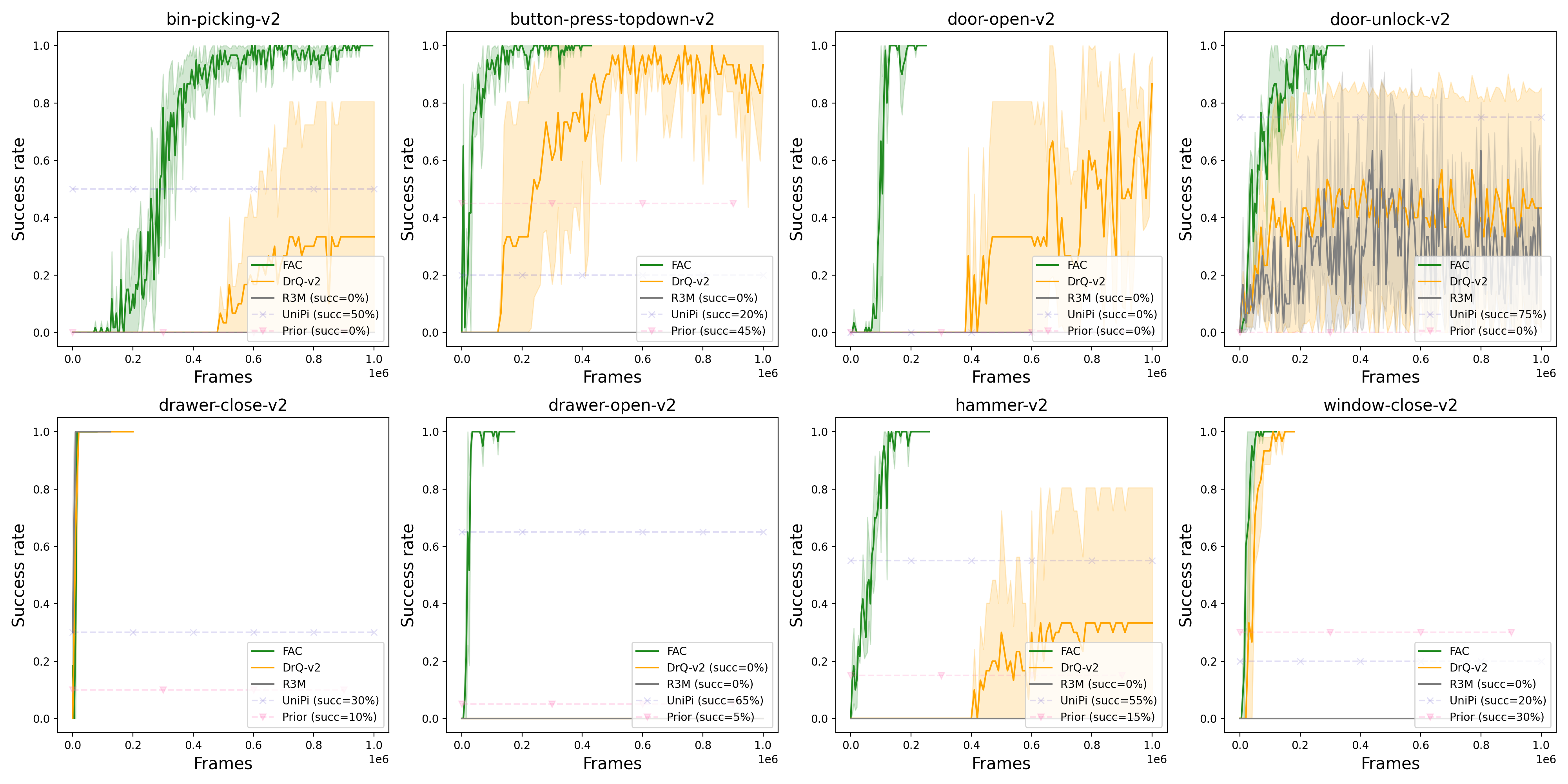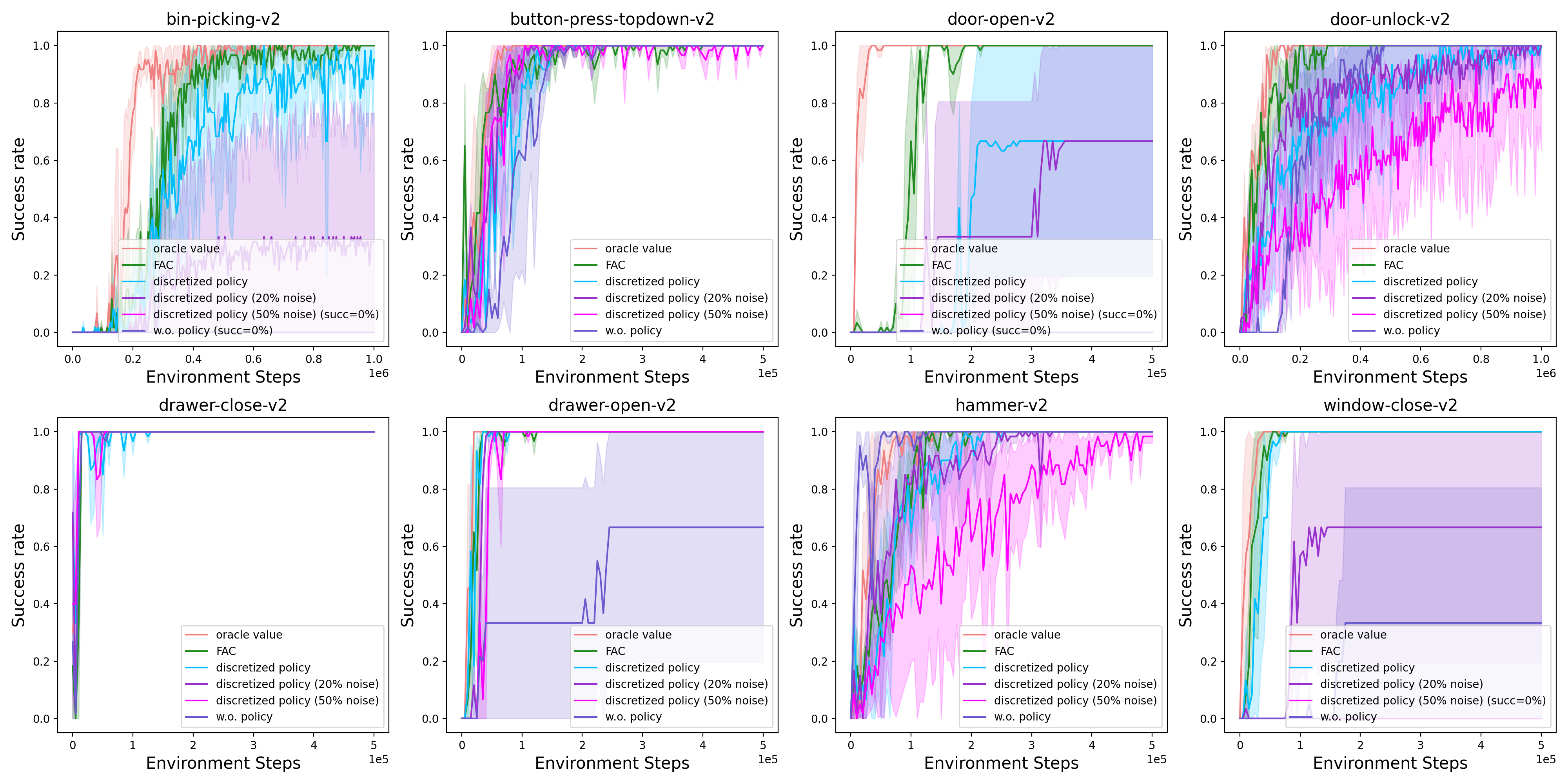Recently, people have shown that large-scale pre-training from diverse internet-scale data is the key
to building a generalist model, as witnessed in the natural language processing (NLP) area.
To build an embodied generalist agent, we, as well as many other researchers, hypothesize that such
foundation prior is also an indispensable component. However, it is unclear what is the proper concrete
form we should represent those embodied foundation priors and how those priors should be used in the
downstream task.
In this paper, we propose an intuitive and effective set of embodied priors that consist of foundation
policy, foundation value, and foundation success reward. The proposed priors are based on the
goal-conditioned Markov decision process formulation of the task. To verify the effectiveness of the proposed
priors, we instantiate an actor-critic method with the assistance of the priors, called Foundation
Actor-Critic (FAC). We name our framework as Foundation Reinforcement Learning (FRL), since our framework
completely relies on embodied foundation priors to explore, learn and reinforce.
The benefits of our framework are threefold. (1) Sample efficient learning. With the foundation prior,
FAC learns significantly faster than traditional RL. Our evaluation on the Meta-World has proved that FAC
can achieve 100% success rates for 7/8 tasks under less than 200k frames, which outperforms the baseline
method with careful manual-designed rewards under 1M frames. (2) Robust to noisy priors. Our method
tolerates the unavoidable noise in embodied foundation models. We have shown that FAC works well even under
heavy noise or quantization errors. (3) Minimal human intervention: FAC completely learns from the
foundation priors, without the need of human-specified dense reward, or providing teleoperated
demonstrations. Thus, FAC can be easily scaled up. We believe our FRL framework could enable the future
robot to autonomously explore and learn without human intervention in the physical world. In summary, our
proposed FRL framework is a novel and powerful learning paradigm, towards achieving an embodied generalist
agent.









